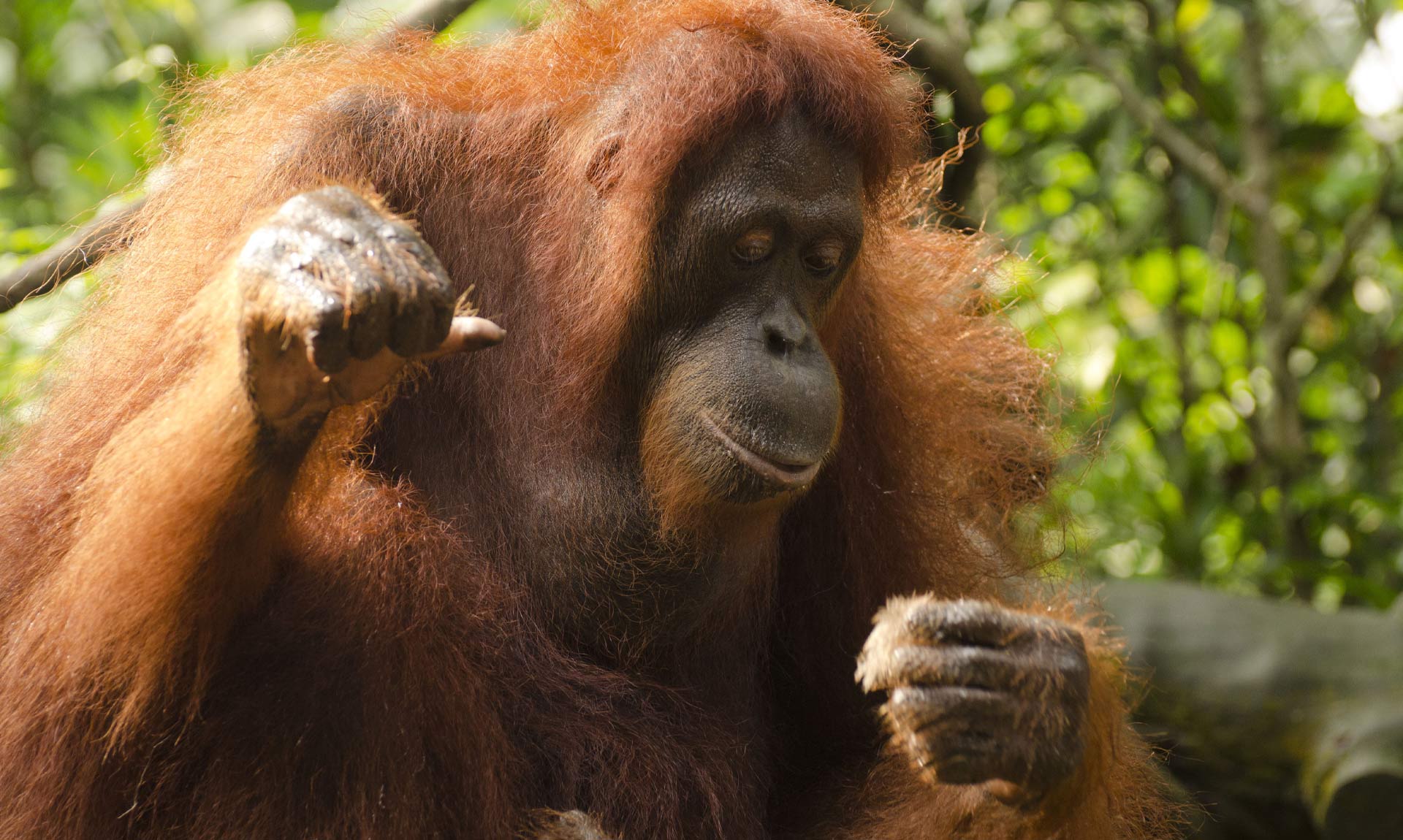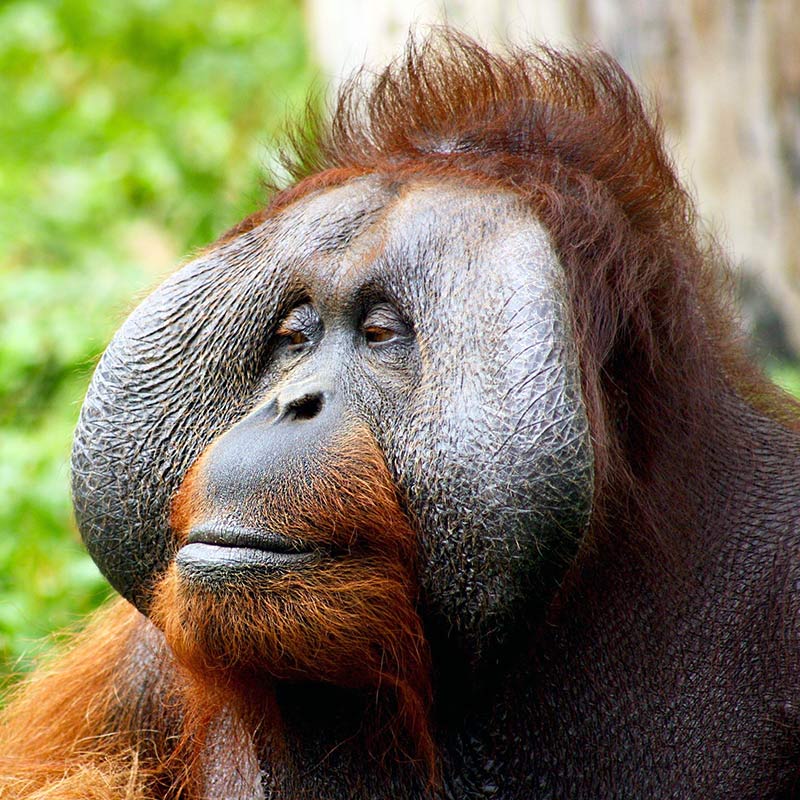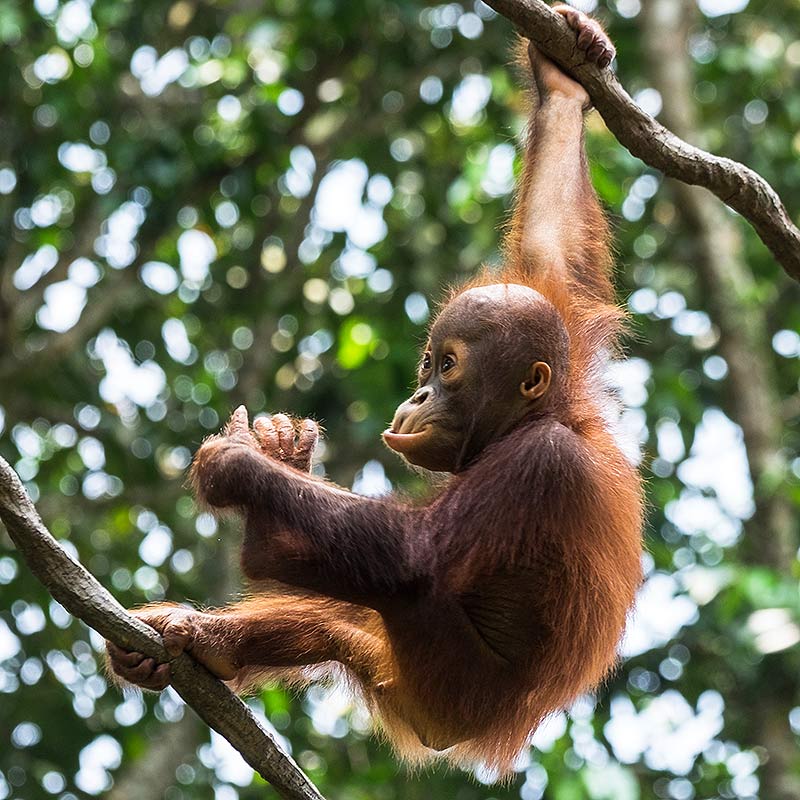TAPANULI ORANGUTANS LEFT
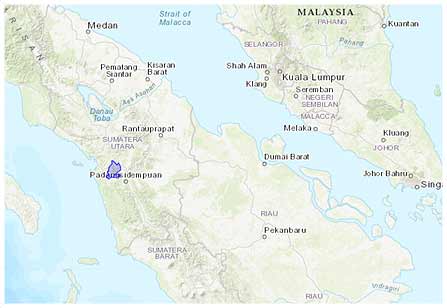
APPROXIMATELY 800 REMAIN IN THE WILD
 100 YEARS AGO THERE WERE APPROXIMATELY 3,200 TAPANULI ORANGUTAN IN THE WILD
100 YEARS AGO THERE WERE APPROXIMATELY 3,200 TAPANULI ORANGUTAN IN THE WILD
 STRONGHOLDS: THE ENTIRE POPULATION LIVES IN A 390 SQUARE MILE AREA IN TROPICAL RAINFORESTS ON THE ISLAND OF SUMATRA IN INDONESIA
STRONGHOLDS: THE ENTIRE POPULATION LIVES IN A 390 SQUARE MILE AREA IN TROPICAL RAINFORESTS ON THE ISLAND OF SUMATRA IN INDONESIA
 THE TAPANULI ORANGUTAN IS CLASSIFIED AS CRITICALLY ENDANGERED ON THE IUCN RED LIST
THE TAPANULI ORANGUTAN IS CLASSIFIED AS CRITICALLY ENDANGERED ON THE IUCN RED LIST
TAPANULI ORANGUTAN FACTS
 The Tapanuli Orangutan is the rarest of great apes and the most endangered. It is the second largest of all tree-dwelling primates with reddish-orange hair and long, powerful limbs. Like all orangutans, the Tapanuli Orangutan has opposable thumbs on both hands and feet. Therefore, despite their large size, orangutans are accomplished tree-climbers and spend more time in trees than any other ape. Male adult Tapanuli Orangutan’s are significantly larger than females. The Tapanuli Orangutan’s day is spent searching for food and resting. Its diet includes honey, plants, fruit, insects and bird eggs. It may also consume small mammals.
The Tapanuli Orangutan is the rarest of great apes and the most endangered. It is the second largest of all tree-dwelling primates with reddish-orange hair and long, powerful limbs. Like all orangutans, the Tapanuli Orangutan has opposable thumbs on both hands and feet. Therefore, despite their large size, orangutans are accomplished tree-climbers and spend more time in trees than any other ape. Male adult Tapanuli Orangutan’s are significantly larger than females. The Tapanuli Orangutan’s day is spent searching for food and resting. Its diet includes honey, plants, fruit, insects and bird eggs. It may also consume small mammals.
Tapanuli Orangutans are very intelligent. One, named Chantek, was toilet-trained. Chantek also learned over 150 words in sign language and understood spoken English. Others have been known to mimic human behavior. For example, using a wood saw after seeing carpenters at work. But the their intelligence goes beyond mimicking. Tapanuli Orangutans create their own tools to increase efficiency at tasks such as extracting insects from trees and removing seeds from hard-skinned fruit. They even use leaves for drinking cups and umbrellas.
Tapanuli Orangutan is the least social of the great primates. Females are more social than males and tolerate other related females living nearby. Females usually stay in the same area in which they were born but males travel widely. Males will only stay in one region when they are able to appropriate a territory from the current dominate male.
Orangutans don’t start families until they are between 10 – 15 years of age for females, and 15 – 20 for males. Gestation lasts for 9 months, but a female won’t produce another child for 6 to 8 years after giving birth.
TAPANULI ORANGUTAN HABITATS
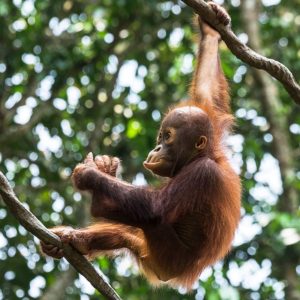 All remaining Tapanuli Orangutans live in one, 390 square mile area. This area is located in tropical rainforests on the island of Sumatra in Indonesia.
All remaining Tapanuli Orangutans live in one, 390 square mile area. This area is located in tropical rainforests on the island of Sumatra in Indonesia.
TAPANULI ORANGUTAN THREATS
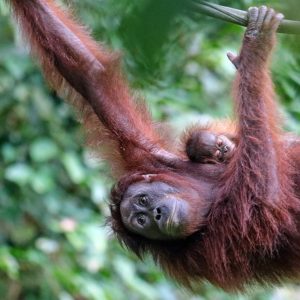 The Tapanuli Orangutan faces a number of threats. Its status of Critically Endangered is due largely to illegal wildlife trade, habitat loss and hunting. A recent threat is a proposed hydroelectric project in an area where the Tapanuli Orangutan population is most dense. This project could have an immediate severe impact on up to 10 percent of its already dwindling population. Conservationists predict that, unless we act now, there will be an 83 percent decline in their population in several decades.
The Tapanuli Orangutan faces a number of threats. Its status of Critically Endangered is due largely to illegal wildlife trade, habitat loss and hunting. A recent threat is a proposed hydroelectric project in an area where the Tapanuli Orangutan population is most dense. This project could have an immediate severe impact on up to 10 percent of its already dwindling population. Conservationists predict that, unless we act now, there will be an 83 percent decline in their population in several decades.
An extremely slow reproduction rate is partially responsible for a reduced population. An adult Tapanuli Orangutan is a large animal and has only a few natural predators. Only Sumatran Tigers, Clouded Leopards, Sumatran Dholes and Crocodiles present a predatory hazard.


